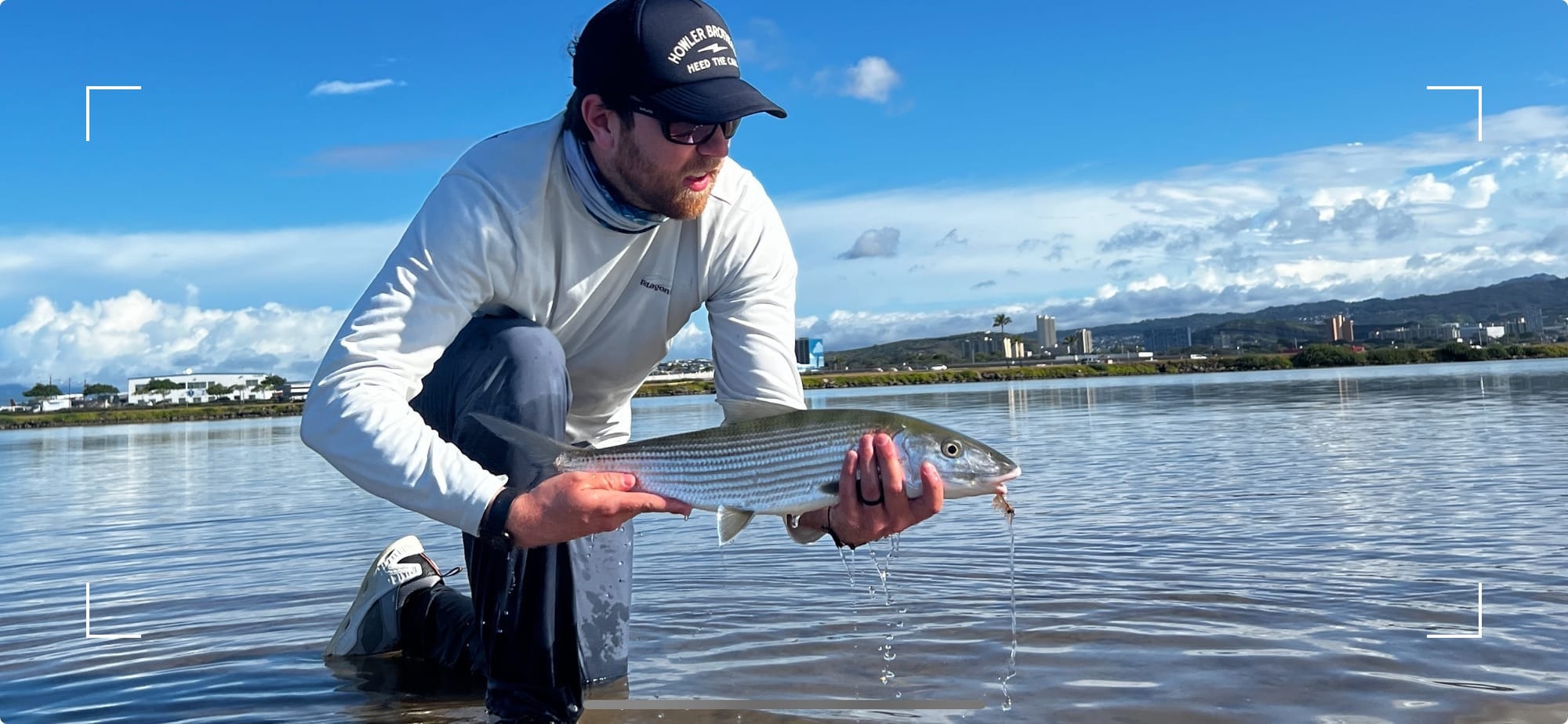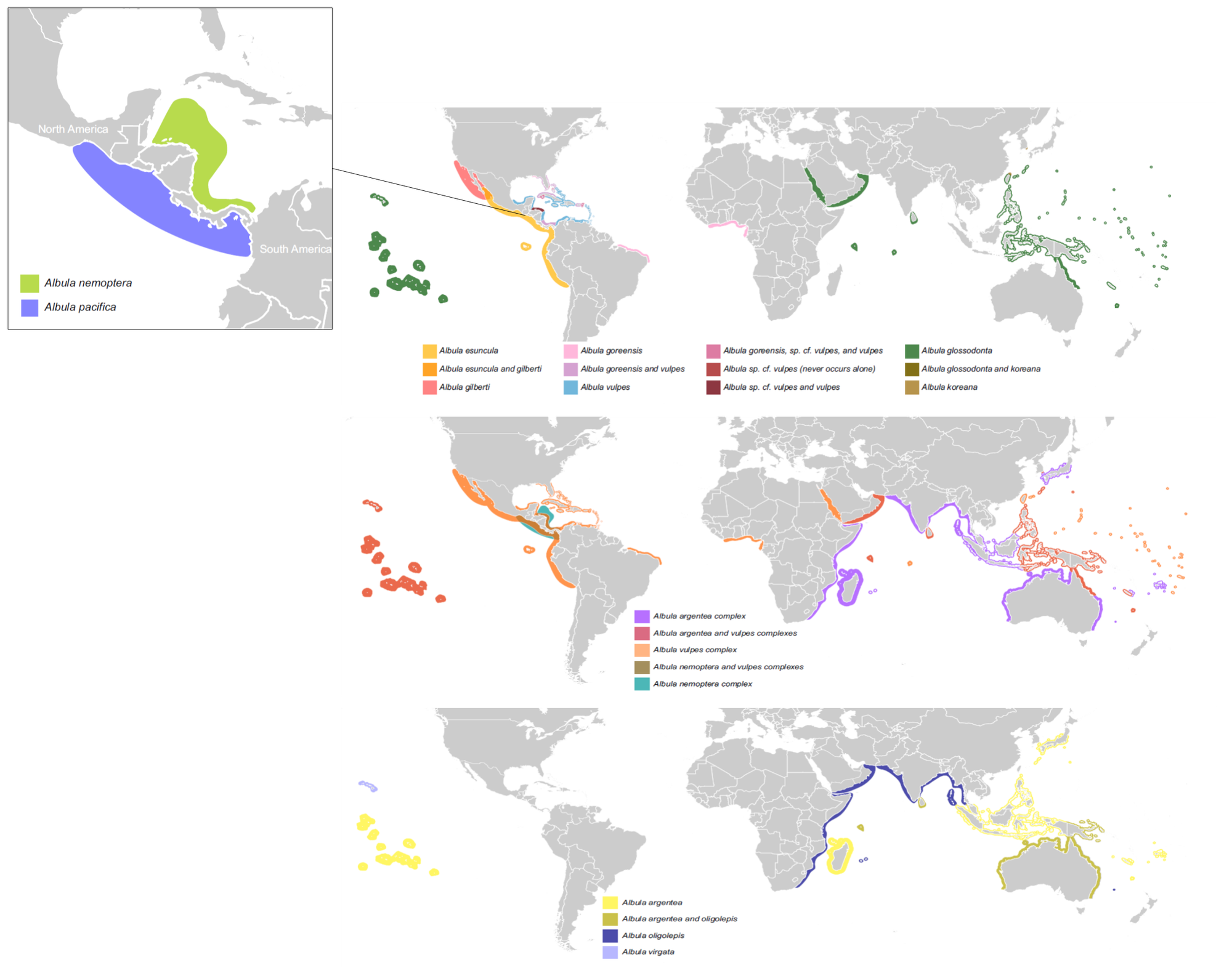Famous Saltwater Fish Rivaling Cutthroat Diversity
there's a saltwater equivalent in the fly fishing world that's more diverse than cutthroat but less commonly discussed

September 2024
We all know about the different cutthroat trout subspecies. You don't?-Here's where to start. They've captured the hearts of pretty much everybody. They come in all kinds of varieties, Sea Run, Yellowstone, Rio Grande; in total 14 unique cutthroat subspecies have been named. If you visit the west, there's a cutthroat out there for you, North to South you can likely find a subspecies to chase. Knowledge about the different types of cutthroat is fairly common these days, but interestingly there's a saltwater equivalent in the fly fishing world that's less often discussed.
Turns out, bonefish, our favorite ghost of the flats, is a catch-all term for, count'em, twelve distinct species.
Despite their circumtropical distribution, you'll find unique bonefish in the world's different oceans. Interestingly, you might find several species within the same region, or even on the same flats. Yet, despite genetic differences and reproductive isolation, these unique bonefish species still look incredibly similar. Even more unfortunate, these different species don't have iconic names and branding like the cutthroat trout. They really need to find out which PR agency represents cutthroat trout.

Let’s back up. What makes a species distinct and separated? For two species to be considered distinct, they can't interbreed. Sometimes geographic barriers develop which slowly drifts one interbreeding species into two genetically distinct groups, other times behavior is responsible for the eventual split.
Interestingly, in bonefish, different species continue to use similar habitats which has promoted the retention of similar morphology and ecology, making the various bonefish a cryptic species: a species indistinguishable based on morphological characteristics yet can't produce viable offspring. Based on genetic markers, scientists think that most speciation in bonefish happened because of geographic isolation or separation. But bonefish are odd. Species usually tend to change appearance and morphology as they speciate and drifting genetics pushes each further apart over time, or they occupy differing ecological niches to minimize competition. Yet, most bonefish species defy these trends with widespread similarities in morphology and habitat preference. You'll often find geographic overlap between different groups of bonefish species, referred to as species complexes. Can multiple species coexist because competition isn't strong? Possibly, they are generalist foragers known to eat whatever is available. Or are there actually undiscovered specialties in their foraging that scientists haven't uncovered yet? We don’t really know, this field is only just getting started.
Research has only recently expanded, with a specific aim in understanding bonefish species to help protect them. But without being able to tell each apart, work still needs to be done. Nonetheless, some research has provided clues. In Hawaii, one study identified behavioral differences tied to nuanced jaw morphology between two species found around the islands. The widely distributed round jaw bonefish (a. glossodonta) is larger on average, heavier and reaches maturity earlier than the endemic sharp jaw bonefish (a. virgata).

These jaw differences may reinforce unique feeding and diet preference, suggesting that subtle morphological signs of specialization in fact exist between these two species. Meaning, even though the two species may occupy similar habitat, they might have found subtle ways to avoid competition. If you're fly fishing for Hawaiian bonefish, locally called o'io, you're likely running into the round jaw variety. Though sharp jaws can be found with local help.
Names and Regions
Here’s a list of the commons names for bonefish and where to find them. I'm only including those species that have been given common names (non-latin names).
Eastern Pacific:
- Cortez (a. gilberti)
- Pacific shafted (a. pacifica)
- Eastern Pacific (a. esuncula)
Western & Central Pacific:
- Korean (a. koreana)
- Roundjaw (a. glossodonta)
- Sharpjaw (a. virgata)
South Pacific:
- Roundjaw (a. glossodonta)
- Smallscale (a. oligolepis)
Indian Ocean:
- Smallscale (a. oligolepis)
- Roundjaw (a. glossodonta)
Atlantic Ocean:
- Bonefish (a. vulpes)
- Channel (a. goreensis)
- Lagoon (a. conorhynchus)
- Threadfin (a. nemoptera)
Sources:
- Deolal, 2016. Albula vulpes (Bonefish or Western Atlantic Bonefish). The Online Guide to the Animals of Trinidad and Tobago, UWI. https://sta.uwi.edu/fst/lifesciences/sites/default/files/lifesciences/images/Albula%20vulpes%20-%20Bonefish%20or%20Western%20Atlantic%20Bonefish.pdf
- Pickett, Brandon D., et al. 2020. Lingering Taxonomic Challenges Hinder Conservation and Management of Global Bonefishes. Fisheries. https://afspubs.onlinelibrary.wiley.com/doi/full/10.1002/fsh.10438
- Colborn, J. et al. 2001. The Evolutionary Enigma of Bonefishes (Albula Spp): Cryptic Species and Ancient Separations in a Globally Distributed Shorefish. Evolution. 807-820. https://repository.si.edu/bitstream/handle/10088/1406/Colborn_Crabtree_Shaklee_Pfeiler_and_Bowen.pdf?sequence=1&isAllowed=y
- Donovan, M., et al. 2015. Ecology and niche specialization of two bonefish species in Hawai'i. Environmental Biology of Fish. DOI 10.1007/s10641-015-0427-z
- Bonefish and Tarpon Trust. 2016. Which Species of Bonefish Did I Catch? https://www.bonefishtarpontrust.org/blog/2016-10-05-which-species-bonefish-did-i-catch/

